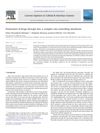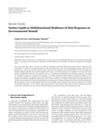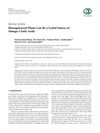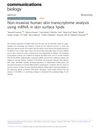Search
forLearn
2 / 2 resultslearn Dutasteride
Heavy duty finasteride that comes with higher risks, but scalp injections seem safe and are gaining popularity
Research
5 / 1000+ results
research Sdr16c5 and Sdr16c6 Control a Dormant Pathway at a Bifurcation Point Between Meibogenesis and Sebogenesis
Sdr16c5 and Sdr16c6 genes regulate a key point in lipid production that affects eye and skin gland function.

research Penetration of Drugs Through Skin: A Complex Rate-Controlling Membrane
The skin is a complex barrier for drug penetration, but understanding its structure and interactions can improve drug delivery methods.

research Surface Lipids as Multifunctional Mediators of Skin Responses to Environmental Stimuli
Skin surface lipids are important for skin health and altering them could help prevent aging and treat skin conditions.

research Bioengineered Plants as a Source of Omega-3 Fatty Acids
Genetically modified plants could be an important source of omega-3 fats to meet global needs.

research Non-Invasive Human Skin Transcriptome Analysis Using mRNA in Skin Surface Lipids
A new non-invasive method can analyze skin mRNA to understand skin diseases better.
Community Join
5 / 1000+ resultscommunity Fats on your Head to Stop Hair Loss?
The conversation discusses the potential of long-chain unsaturated fatty acids, like oleic and linoleic acid, as an additional treatment for hair loss, which may inhibit the enzyme responsible for converting testosterone to DHT and promote hair growth. Users humorously suggest using oils topically and discuss other hair loss treatments, but the main focus is on the science behind fatty acids and their role in hair health.
community DHT Harms Scalp Microbiome: DHT Itch is REAL
Increased Malassezia and Cutibacterium in the scalp microbiome are linked to higher sebum production and inflammation in androgenetic alopecia (AGA). Treatments include ciclopirox shampoo, benzoyl peroxide shampoo, clobetasol propionate, calcipotriol, minoxidil, finasteride, and dutasteride.
community There is something off with DUT and it’s time we stop ignoring it
Dutasteride and finasteride for hair loss, with dissatisfaction expressed about dutasteride and consideration of switching back to finasteride. Users share varied experiences, noting individual responses to treatments differ.
community 6 Months Into Dut Progress Pictures
Switching from finasteride to dutasteride caused significant shedding but minimal side effects. The user plans to continue dutasteride for 12 months despite concerns about hair density.

community Compressed part of research of theory of androgenic/anabolitic balance. AGA h-responders analytic. Theory of physio-metabolitic method of anti AGA treatment
The treatment for androgenetic alopecia involves using finasteride and minoxidil with intense exercise and cold exposure to boost metabolism and reduce androgenic effects, potentially leading to hair regrowth. This approach may activate biological pathways for improved hair and overall health.